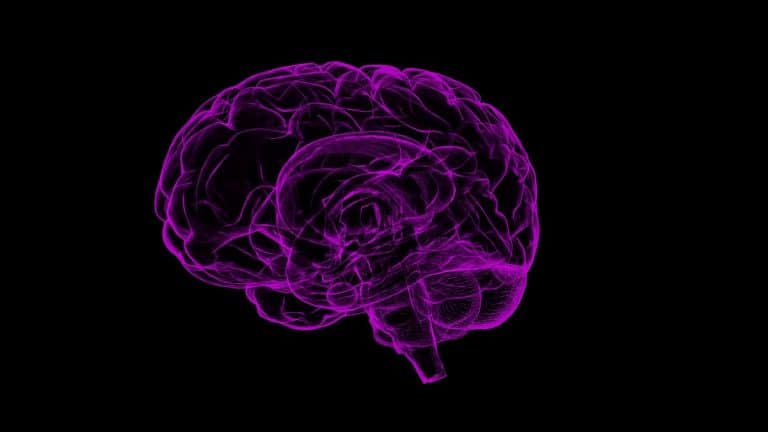Who Cares About Marijuana Side Effects, Right?

Let’s be honest — the use of cannabis is peaking. Recreational puffs thrive in popularity, medical use is blooming. Considering that this is a plant with strong psychoactive properties, are marijuana side effects also on the rise?
After almost forty years of illicit drug stigma, marijuana use is going through a new renaissance. Drug decriminalization, legalization, and its medical potential have put it back on the media pedestal.
This article will help you gain a much better understanding of what the true downsides of smoking marijuana are, how often they occur, and how long they last.
So, let’s dive right in!
Introduction to Side Effects of Cannabis
Cannabis Sativa and Indica have a multitude of strains, which can adversely impact the human organism. However, their production is not always completely regulated and the composition of one product may trigger a different reaction than that of another.
Medical marijuana, on the other hand, has a closely monitored production. Its strains are cultivated to produce an effect within the defined medical constraints.
CBD has a different receptor affinity and produces mostly positive effects. CBD oil side effects are less intensive than the ones that faithful pot consumers experience.
Whether natural or synthetic, the side effects of marijuana are tightly connected to their physiological and psychological activity. The intensity of these effects depends on the potency of the consumed product, including the frequency of use.
Recreational users usually focus on the lovely effects of weed smoke, thus neglecting the harmful effects that it carries. Medical users tend to stick to general compliance in the majority of cases, thus minimizing the incidence of adverse effects.
The Development of the Side Effects of Weed
Acute use of marijuana is considered an isolated case without repetition. It usually induces the main physiological side effects that can last up to 48 hours. In acute cases, the psychological component is mainly perceived as the “experience.”
Some side effects develop in the short term and usually wither away during the following week of abstinence. Others, however, can create a long-lasting impairment.
Bad side effects of weed are also linked to the frequency of use. In the case of chronic use, the body’s physiological response starts to change, and the augmented perception of reality influences the onset of deep psychological developments.
Chronic users are defined as:
- “Light” (1–4 doses per week)
- “Intermediate” (5–6 doses per week)
- “Heavy” (seven or more doses per week)
Depending on the frequency of use, marijuana can stay in the body anywhere between 3 days to 3 months.
5 Major Marijuana Side Effects on the Body
Cognitive Impairment
Smoking marijuana can significantly impact our focus, memory, and learning by interfering with associative processes in the hippocampus.
Acute cognitive impairment is mainly experienced as intellectual bluntness. It is expressed as the difficulty to recall things and perform problem-solving tasks, often referred to as “being stoned.”
It seldom leaves any lasting consequences, other than a bit of amnesia regarding the event.
Chronic use, however, can lead to lasting or even permanent changes. According to the research, Cannabis Sativa’s effects on cognition were not associated with “light” and “intermediate” users.
On the other hand, “heavy” marijuana use is associated with deficits in mathematical skills, verbal expressions, and poor memory recall.
Long Term Effects of Marijuana’s Continued Use on Cognition
Smoking pot in the pre-teenage period may seem cool, yet it can produce a measurable impairment if it persists.
A study from 2012, which followed more than 1,000 participants for 20 years, conducted a battery of tests on them, including neuroimaging and psychological tests.
The study found out that people who started using marijuana in their teens and maintained a relationship with weed from then on had a notable intellectual decline.
Their average intellectual loss was about 8 IQ units. However, among “heavy” adolescent marijuana users, there were no signs of significant cognitive decline.
According to the authors, these long term side effects of marijuana’s enjoyment occurred due to the heavy impact of weed on the brain’s overall development during adolescence. It impaired their ability to learn, be intellectually developed, and be emotionally mature within this period.
On the other hand, a more recent study on 789 pairs of adolescent twins showed that both the abstinent and the user twin had the same memory decline over time regardless of marijuana use, thus completely negating the claim about marijuana side effects from the previous survey.
Impaired Psychomotor Performance
One should not drive while high on pot!
There are a considerable number of effects of weed on physical coordination. According to research, human performance can be impaired up to 24 hours after smoking weed, with as little as 24 mg of THC.
In acute users, this is mainly perceived as clumsiness or slow coordination. This happens due to marijuana’s effects as a muscle relaxant, contributed by divided attention and slower reflexes. Acute cannabis consumption is often associated with higher incidents of motor vehicle crashes.
Compulsive Vomiting
This is known as Cannabis Hyperemesis Syndrome, and it is common with “heavy” marijuana users. It is described as a state of cyclic episodes of intensive nausea and vomiting.
In lighter doses, cannabis has been proven to increase appetite and stimulate digestion. However, in chronic use, the brain receptors become saturated and can onset an adverse reaction.
Some studies claim that these side effects are caused by the liver being overloaded with metabolites of weed.
Smoking Weed Side Effects on Our Respiratory System
Breathe in, hold it, that’s the key.
It’s worth pointing out that smoking marijuana is an event concentrated in the lungs. Regardless of its unique aroma, cannabis can seriously irritate lung tissue.
Phytochemical constituents of weed smoke act aggressively on the bronchiole. Acute use can result in cough, and chronic use is consistent with daily phlegm overload.
The evidence states that “heavy” consumption is associated with a higher prevalence of both acute and chronic bronchitis, compared to non-smokers. Other studies claim that side effects of synthetic weed include respiratory depression, which can be deadly.
The causes of the main respiratory side effects lie not only in natural marijuana compounds but also in their incineration products. These are ammonia, carbon monoxide, chlorine, polycyclic aromatic compounds, etc.
That said, “heavy” marijuana use is also associated with the condition known as popcorn lungs (aka bronchiolitis obliterans, the condition that damages the smallest airways in the lungs).
Negative Effects of Weed on Our Heart Health
This is an acute event. Marijuana can increase the heart rate by 20 to 50 beats per minute in mere seconds after inhaling. These effects can last up to three hours after consumption.
People with heart conditions need to reconsider using marijuana as its side effects can intensify arrhythmia, thus producing an unpleasant and potentially deadly experience.
Psychological Side Effects of Weed
Depression
The relationship between depression and marijuana is complex. It is known that underlying depression can cause an increment in marijuana use as a superficial remedy.
However, there is evidence that positions recreational marijuana use as the cause of various depressive disorders.
“Light” use can be linked to depressive episodes, such as suicidal ideations or short-term withdrawal depression.
Hard depressiveness is associated with “heavy” and “intermediate” marijuana use. Frequent neurostimulation can deplete the deposits of happiness hormones within the synapses. This usually causes hard abstinence symptoms and can lead to dependence.
Anxiety
Anxiety is one of the most common marijuana side effects. As research shows, chronic marijuana use can influence the onset of mild to moderate anxiety disorder without any connection to a preexisting individual or family background.
Chronic users often experience the relaxing effects of weed, which is followed by neural excitation. This is expressed as increased irritability, nervousness, agitation, limb restlessness, and sound hypersensitivity.
It leads to amplified emotional experience and could result in allusions of fear.
Paranoia
Research data suggests that marijuana users have higher chances of developing temporary paranoia than the rest of the population. Although considered merely a “bad trip,” like anxiety, paranoia is also one of the most common psychological weed side effects.
It is usually accompanied by feelings of anxiety and endangerment, often followed by changes in perception. Paranoia is fueled by negative thoughts and worry. It lasts until THC effects wear off and is common both in acute and chronic use.
Psychotic Symptoms
It has been historically known that cannabis causes psychosis.
Acute use alters cognitive reasoning and can produce temporary hallucinations. Furthermore, a single dose of marijuana can induce a psychotic episode in predisposed people.
Epidemiological studies have proven beyond doubt that long term effects of marijuana’s continued use include schizophrenia even in individuals with no previous history of the illness.
Behavioral Problems
When consumed consistently, weed causes deep psychological changes, which relate to the aforementioned psychogenic side effects.
Due to enhanced sensory experience and impaired cognition, “heavy” users tend to live with altered perceptions. Withdrawal anxiety makes it hard to flourish in social circles, which leads to psychological internalization and social withdrawal.
Chronic users often have relationship problems and mood swings. In severe cases, they express antisocial behavior, such as vandalism.
Marijuana Tolerance, Dependence, and Addiction
According to research, 9% of adults and 17% of teens that use marijuana become addicted. This makes addiction one of the most serious side effects. Nevertheless, there is a difference between addiction and dependence, yet many studies use the terms interchangeably.
“Heavy” users quickly develop tolerance. It is experienced as the rapidly fading effects of the common dose, which intensifies the cravings for repeated use. The brain mechanisms for tolerance include the internal downregulation of cannabinoid receptors.
When it comes to the side effects of smoking weed, studies show that it takes several weeks of chronic marijuana use to build up clinical tolerance. Tolerance levels tend to decrease significantly after a week of abstinence.
Cannabis dependence syndrome develops in highly tolerant users. It is characterized by the presence of withdrawal symptoms during the period of abstinence.
The most common withdrawal symptoms include irritability, sleep disorders, and physical discomfort. Withdrawal peaks in the first week of abstinence and usually passes after the second week.
Is marijuana addiction real? It is considered one of the most negative side effects of weed.
Addiction per se is a severe state. The user is considered an addict when they cannot control the consumption and cannot stop taking it regardless of the consequences. Addiction is defined as a psychological state, not physical.
Addiction is more common in people with underlying psychopathologies, such as depression, anxiety, or psychosis. Behavioral psychology states that insecure personality types are more predisposed to addiction.
Regarding the negative side effects of marijuana, addiction is better defined as a cannabis use disorder (CUD). Unfortunately, cannabis or marijuana is regarded as other Schedule I drugs, such as heroin, although it is far from it.
Cannabis Side Effects & Libido
Throughout history, marijuana has been referred to as an aphrodisiac and sexual experience enhancer.
One study focused on measuring marijuana smokers’ sexual activity. The results showed a positive association when it comes to sexual frequency in both women and men. The study also suggests that weed doesn’t seem to impair sexual function. The users described marijuana as an orgasm-quality booster and an intimacy enhancer.
However, the side effects of weed can sexually impair a partner as well. The psychological effects of marijuana can lower a person’s libido by enhancing internalization and partner detachment. In men, this can often result in erectile dysfunction.
A 2010 study suggests that men who use marijuana on a daily basis might end up having trouble achieving orgasm.
Moreover, marijuana can be one of the causes of gynecomastia (enlargement of the breasts in men). This hormonal imbalance can have effects on sexual performance.
On the other hand, CBD oil lubricants are becoming increasingly popular as they have proven to be a great aid.
Laced Weed Side Effects
Laced marijuana is enhanced with some other chemical, medication, or drug. There are several ways to combine weed with other substances, but the visually undetectable ones include spraying liquid forms.
Marijuana is mostly laced with LSD, PCP, coke, ketamine, fentanyl, heroin, opium, or crack. The side effects include a variety of physiological effects, which is a trait of the additional substance.
Additionally, the common experience is much stronger than that of regular weed. Depending on the mixture, the side effects include visual and auditory hallucinations, involuntary muscle spasms, excessive sweating, heart palpitations, distorted body feelings, etc.
Medical Marijuana Side Effects
Medical cannabis is considered purer than its recreational counterpart and causes fewer side effects. However, the side effects mentioned in this article may apply to the medical strains as well.
According to research, side effects of medical marijuana’s use are:
- Red eyes
- Dry mouth
- Thirst and hunger
- Anxiety and paranoia
- Altered sensory perceptions
- Cognitive impairment
- Fatigue
- Diarrhea and constipation
- Respiratory issues
- Increased heart rate
- Hallucinations
- Slurred speech
- Tolerance
- Dependency.
In the case of aerosol-borne infections, one may never be too careful as to refrain from sharing blunts or vaporizers. Infectious droplets, such as in the case of Coronavirus, linger on the mouth mucosa and could be transmitted this way.
Summing Up
Weed makes the time pass slower and deepens our focus. It empowers the feelings of love and relaxation. Marijuana makes music wonderful and food a lot more enjoyable (and tasty).
Again, let’s be honest — it can help you sleep, but it can also bring out your worst nightmares. Long-term side effects include behavioral and physiological consequences, and as such is a thing users should be very much aware of.
The best way to avoid the negative effects of weed is to control the procurement and use of marijuana products.
FAQs
Why is marijuana illegal?
Marijuana became illegal when the Controlled Substance Act of 1970 classified it as a Schedule I drug. The plant’s production, possession, and distribution in the US have been treated as a criminal act.
In the past few decades, however, many countries worldwide have decriminalized or legalized the use of cannabis.
Does marijuana kill brain cells?
There seems to be no evidence that marijuana influences brain cell count in adults.
Nevertheless, some studies show that smoking marijuana in childhood and teenhood can permanently impair brain and personality development.
Still, more data is needed to fully assess the long-term effects of marijuana on the brain.
Does smoking weed cause cancer?
In general, the side effects of marijuana use do not include the lung or any other type of cancer.
However, weed smoke contains carcinogens similar to tobacco smoke. These components can cause lung tissue inflammation. Yet, the cumulative effects of pure cannabis smoke on the lungs have been proven less harmful than when mixed with tobacco.
Can you die of THC overdose?
It is possible to overdose on cannabis, yet there are no death records.
The effects of high doses can produce an unpleasant experience, which includes: respiratory depression, headaches, uncontrollable shaking, vivid hallucinations, severe panic, and paranoia, and in rare cases, they may include coma.





